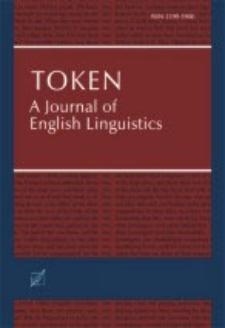Biblioteka Cyfrowa Uniwersytetu Jana Kochanowskiego udostępnia 13 273 obiektów cyfrowych
Obiekt
Tytuł: A denial of identity. The Armenian genocidein the letters to the editor of The Times 1914-1926
Twórca:
Tytuł publikacji grupowej:
Abstrakt:
Genocide is the most violent denial of human identity, and it aims systematically to transform the societal organization of both victims and perpetrators. Considered the first among the genocides of the 20th century, the massacre of around 1.5 million Armenians has been denied official recognition by the Turkish government to date. Such denial has resisted not only international political pressure, but also evidence provided by news articles, editorials, and by letters to the editor documenting or referring to the massacre. Many letters to the editor of The Times mention the massacres that were later to be referred to as the Armenian genocide; the corpus analysed in this study includes those published closer to the events, between 1914 to 1926. Letters to the editor of a newspaper are selected for publication when their content fosters debate among the readers on topics which are particularly relevant for the newspaper’s agenda, and they have rarely been the target of linguistic analysis. This study examines the linguistic patterns used to represent the Armenian genocide at the time of the events, and how these patterns influence the perception of the Armenian identity via its representation through the letters to the editor. Concordance lines, collocations, clusters and extended co-textual references of keywords related to the Armenian national identity will be analysed using a corpus-assisted approach.
Miejsce wydania:
Opis fizyczny:
ISSN:
Wydawca:
Wydawnictwo Uniwersytetu Jana Kochanowskiego w Kielcach
Data wydania:
Identyfikator:
oai:bibliotekacyfrowa.ujk.edu.pl:7995 doi:10.25951/4846
Język:
Jest częścią:
Token : A Journal of English Linguistics
Ma część:
Typ:
Prawa dostępu:
Format:
Kolekcje, do których przypisany jest obiekt:
- Biblioteka Cyfrowa Uniwersytetu Jana Kochanowskiego > Wydawnictwo Uniwersyteckie
- Biblioteka Cyfrowa Uniwersytetu Jana Kochanowskiego > Wydawnictwo Uniwersyteckie > Wydawnictwa ciągłe
- Biblioteka Cyfrowa Uniwersytetu Jana Kochanowskiego > Wydawnictwo Uniwersyteckie > Wydawnictwa ciągłe > "Token : A Journal of English Linguistics"
Data ostatniej modyfikacji:
4 kwi 2025
Data dodania obiektu:
13 lut 2023
Liczba wyświetleń treści obiektu:
72
Wszystkie dostępne wersje tego obiektu:
https://bibliotekacyfrowa.ujk.edu.pl/publication/4846
Wyświetl opis w formacie RDF:
Wyświetl opis w formacie OAI-PMH:
| Nazwa wydania | Data |
|---|---|
| Martini, Isabella, A denial of identity. The Armenian genocidein the letters to the editor of The Times 1914-1926 | 4 kwi 2025 |

